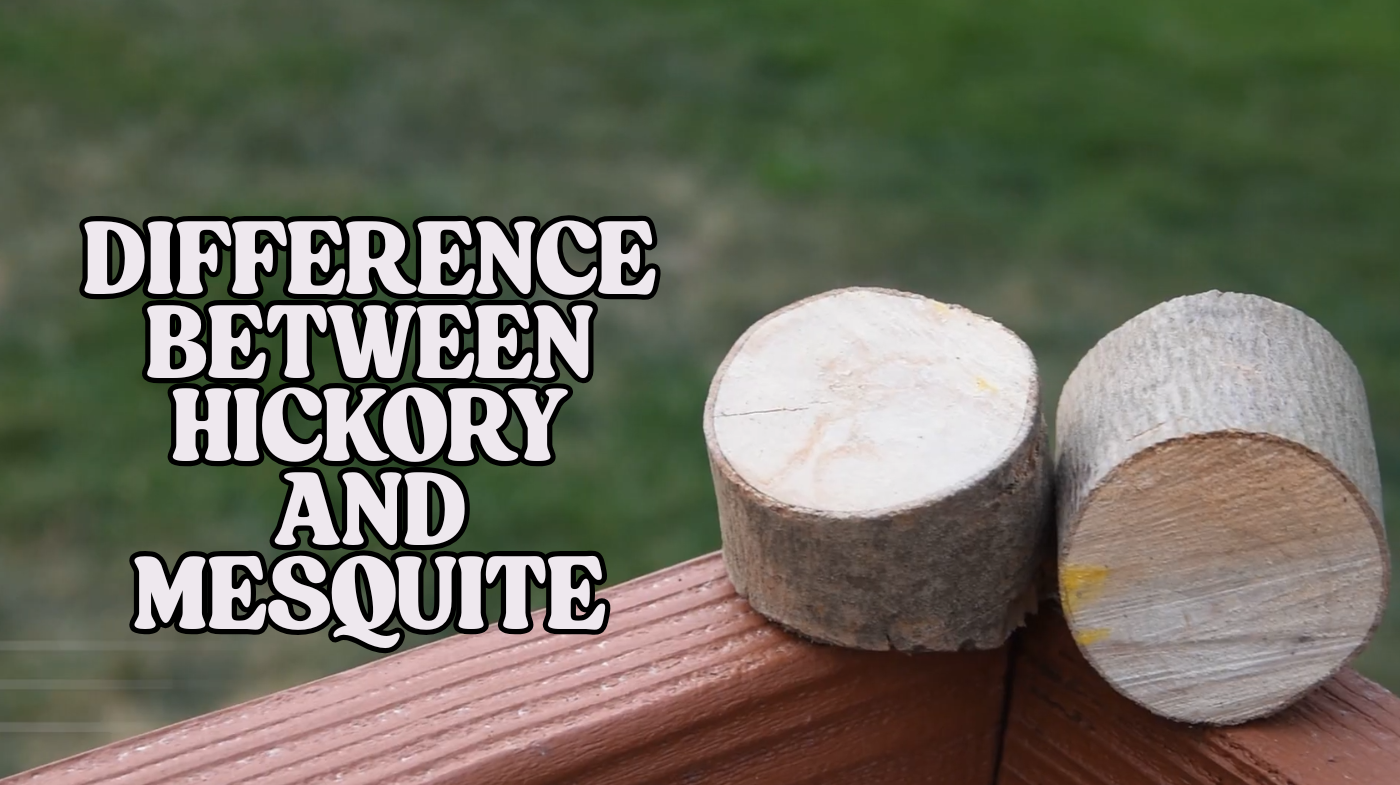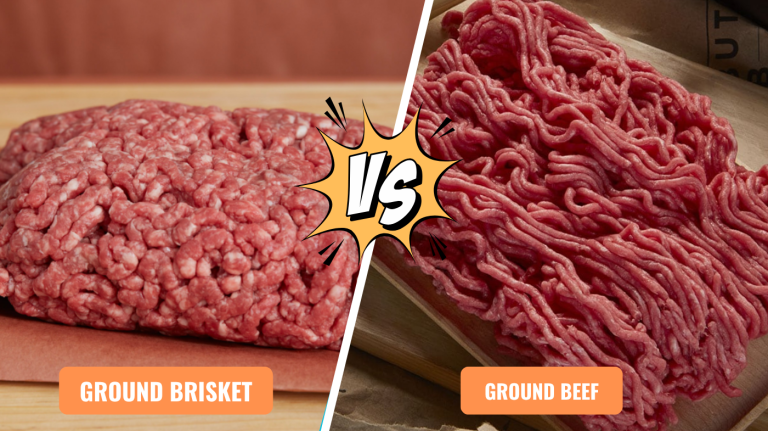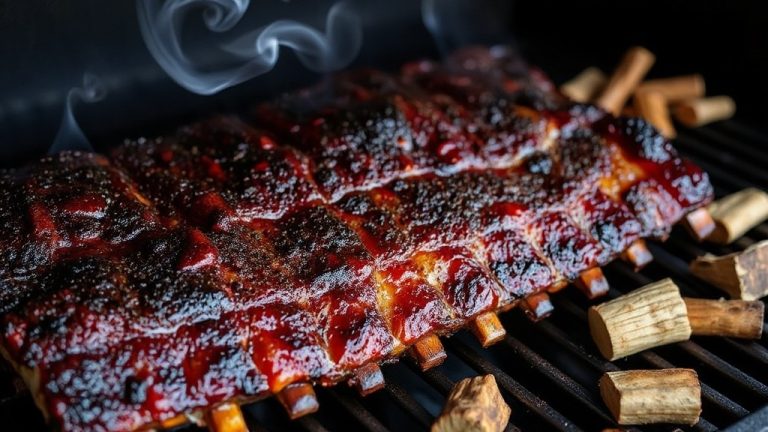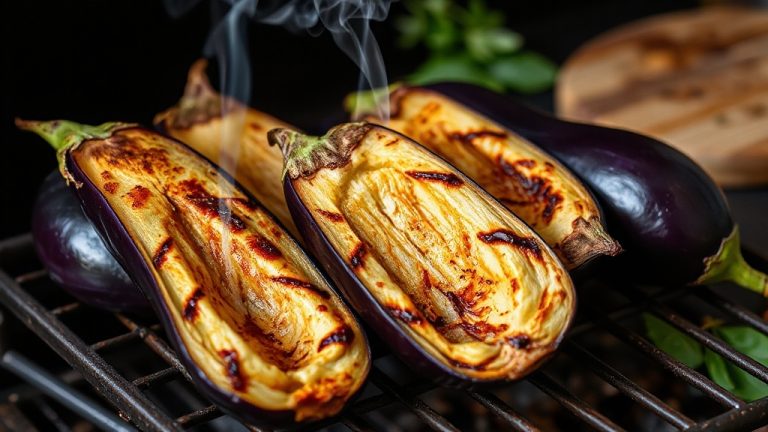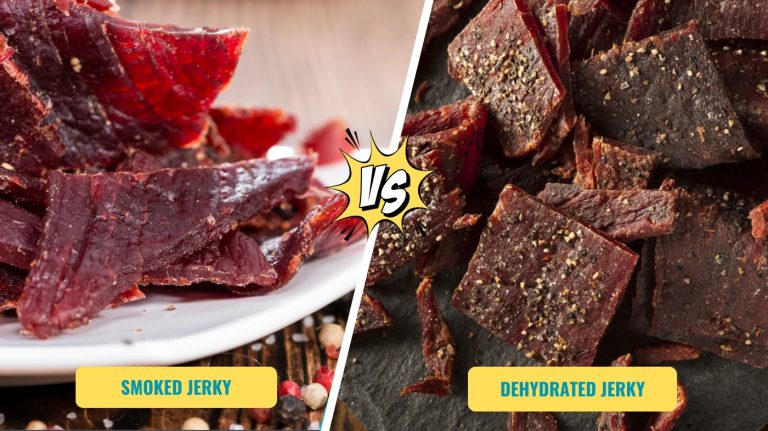Difference Between Hickory and Mesquite: Smoky Secrets
You’ll find hickory produces a steady, moderate heat with a sweet, bacon-like smoky flavor ideal for beef and rich meats, thanks to its phenolic compounds and longer burn time.
Mesquite burns hotter and faster, offering intense, spicy, and earthy smoke that pairs best with bold red meats like beef.
Hickory suits low-temperature, slow smoking, while mesquite works for high-heat bursts. Understanding these differences will help you master flavor and heat control in your smoking technique.
Key Takeaways
- Hickory produces a strong, bacon-like smoky flavor with subtle sweetness, while mesquite offers a spicy, earthy, and slightly bitter smoke.
- Hickory is ideal for beef and fatty cuts; mesquite pairs best with red meats like beef steaks due to its intense flavor.
- Hickory burns steadily at moderate hardness, suitable for low-temperature smoking; mesquite burns hotter and faster with intense heat bursts.
- Hickory is best for long, slow smoking sessions; mesquite works well as a short, bold flavor accent during high-temperature cooking.
- Using hickory provides rich mahogany color and complex flavors, whereas mesquite’s intensity requires sparing use to avoid bitterness.
Hickory vs Mesquite Comparison Table
| Aspect | Hickory | Mesquite |
|---|---|---|
| Flavor Profile | Strong, bacon-like flavor with subtle sweetness | Spicy, earthy, and slightly bitter smoke |
| Chemical Composition | Produces phenolic compounds | Releases higher concentrations of tannins and volatile oils |
| Wood Hardness | Moderate hardness (Janka 1820) | Higher hardness (Janka 2345) |
| Burn Characteristics | Steady, moderate heat with longer burn time | Burns hotter and faster with intense heat bursts |
| Ideal Temperature Range | Lower temperature smoking (<275°F) | High-temperature cooks (225°F–250°F) |
| Best Meat Pairings | Beef ribs, ham, and brisket – ideal for fatty, richly seasoned cuts | Red meats like beef steaks – especially in Tex-Mex cuisine |
| Color Impact | Imparts rich mahogany hue | Provides bold coloring |
| Usage Recommendations | Perfect for long, slow smoking sessions | Works well as short, bold flavor accent |
| Blending Suggestions | Blend with milder woods like maple to balance intensity | Use sparingly or combine with fruit woods to avoid bitterness |
| Smoke Release | Slow smoke release over long periods for complex flavor development | Fast-burning profile with intense smoke |
| Risk Factors | Milder smoke – less risk of overpowering | Can overwhelm delicate proteins – requires precision handling |
| Cooking Style | Low-temperature, slow smoking | High-heat bursts and quick-cooking methods |
Flavor Profiles and Meat Pairings
Although both hickory and mesquite deliver robust smoky flavors, their chemical compositions create distinct profiles that influence how they interact with different meats.
Hickory emits phenolic compounds producing a strong, bacon-like flavor with subtle sweetness. Larger wood chunks burn slowly, releasing smoke over long periods, which can enhance the flavor depth during smoking.
This slow smoke release can help develop a complex harmony in the meat’s flavor similar to layered barbecue sauces.
Meanwhile, mesquite releases higher concentrations of tannins and volatile oils, yielding a spicy, earthy, and slightly bitter smoke. You’ll find hickory ideal for beef ribs, ham, and brisket, as it imparts a rich mahogany hue and complements fatty, richly seasoned cuts.
Mesquite’s intense, fast-burning profile suits red meats like beef steaks, especially in Tex-Mex cuisine, but it can overwhelm delicate proteins. To balance intensity, you should blend hickory with milder woods like maple.
Use mesquite sparingly or combined with fruit woods to avoid bitterness, optimizing flavor integration with your chosen meat. Using complementary ingredients like molasses or vinegar-based sauces can also help balance the bold smoke flavors.
Wood Properties and Smoking Techniques
When selecting between hickory and mesquite for smoking, understanding their wood properties and combustion behaviors is essential to mastering temperature control and flavor development.
Hickory’s moderate hardness (Janka 1820) and steady burn suit lower temperature smoking (<275°F), yielding a sweeter, milder smoke.
Mesquite, with higher hardness (Janka 2345) and intense heat output, excels in high-temperature cooks, imparting bold, earthy flavors.
Balancing these woods optimizes flavor and avoids bitterness. Choosing the right wood also influences how well the smoke complements the fat marbling in meats, enhancing overall taste and tenderness.
| Property | Hickory | Mesquite |
|---|---|---|
| Burn Time | Longer, steady heat | Shorter, intense heat bursts |
| Smoke Flavor | Sweet, mild | Strong, spicy |
| Optimal Use | Base wood for prolonged smokes | Accent wood for flavor bursts |
Frequently Asked Questions
Are Hickory and Mesquite Woods Safe for Indoor Smoking?
You want strong, clean smoke that flavors without harm. Both hickory and mesquite woods are safe for indoor smoking if you use untreated, kiln-dried, cooking-grade pieces free from chemicals.
They release flavorful compounds without toxic emissions when burned correctly. Avoid treated or contaminated wood, which emits carcinogens and VOCs.
Make certain good ventilation and soak wood chunks to reduce flare-ups, protecting your respiratory health while enhancing your culinary results indoors.
How Should I Store Hickory and Mesquite Wood Properly?
You should store hickory and mesquite wood in a dry, well-ventilated area to maintain low moisture content and prevent mold. Elevate the wood off the ground using pallets or racks to avoid soil moisture absorption.
Stack the wood loosely, allowing airflow between logs, and cover the top with a breathable tarp that sheds rain but lets moisture escape. Regularly inspect for pests or mold, and rotate stock to use older wood first.
Do Hickory and Mesquite Smoking Produce Harmful Chemicals?
Think of smoke as an invisible chemical cocktail. When you smoke with hickory or mesquite, both release polycyclic aromatic hydrocarbons (PAHs) and volatile organic compounds (VOCs), which can be harmful.
Mesquite’s hotter burn often produces more of these carcinogens. To minimize risks, keep temperatures regulated—under 275°F for hickory and 225°F–250°F for mesquite—and use pellet grills to guarantee cleaner combustion and reduce toxic chemical formation.
What Are the Environmental Impacts of Using Hickory vs Mesquite?
When you use mesquite, you should consider its high water consumption and invasive nature, which disrupt ecosystems and soil nutrients.
Removing mesquite can save significant water but requires ongoing control efforts due to aggressive resprouting. Hickory generally has less environmental impact, contributing slower nutrient cycling and sustainable use.
Both woods offer efficient combustion with relatively low carbon emissions, but mesquite’s invasiveness may increase carbon release during removal without proper management.
Can Mesquite Sparks Cause Grill Fires or Safety Hazards?
Imagine glowing mesquite embers leaping unpredictably next to your grill’s steady flame. Yes, mesquite sparks can cause grill fires or safety hazards due to their intense heat and the high potential for igniting nearby combustibles.
The sparks carry creosote and grease residues, increasing flare-up risks. You must constantly supervise, keep fire suppression tools handy, and avoid windy conditions to mitigate these scientifically documented dangers effectively.
Master the Smoke: Pick the Right Wood for Perfect Flavor
When you choose between hickory and mesquite, think of them as two different instruments in a smoker’s orchestra. Hickory, with its robust, bacon-like sweetness, is your reliable cello, enriching beef and ribs with depth.
Mesquite, sharp and intense like a trumpet, demands precision—best for quick-cooking beef cuts to avoid bitterness. Scientific studies show mesquite’s high phenolic content accelerates smoke absorption, so handle it with care to master your flavor symphony.
